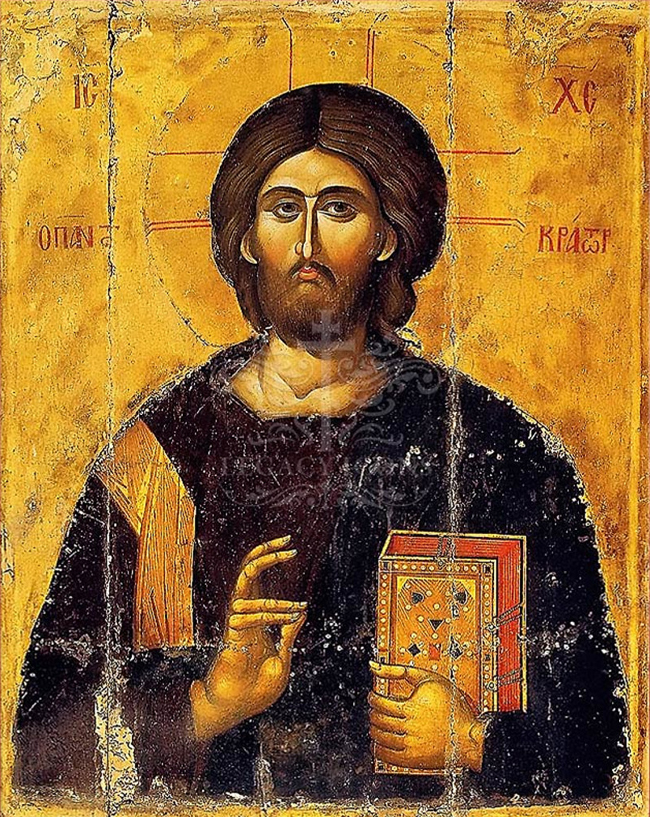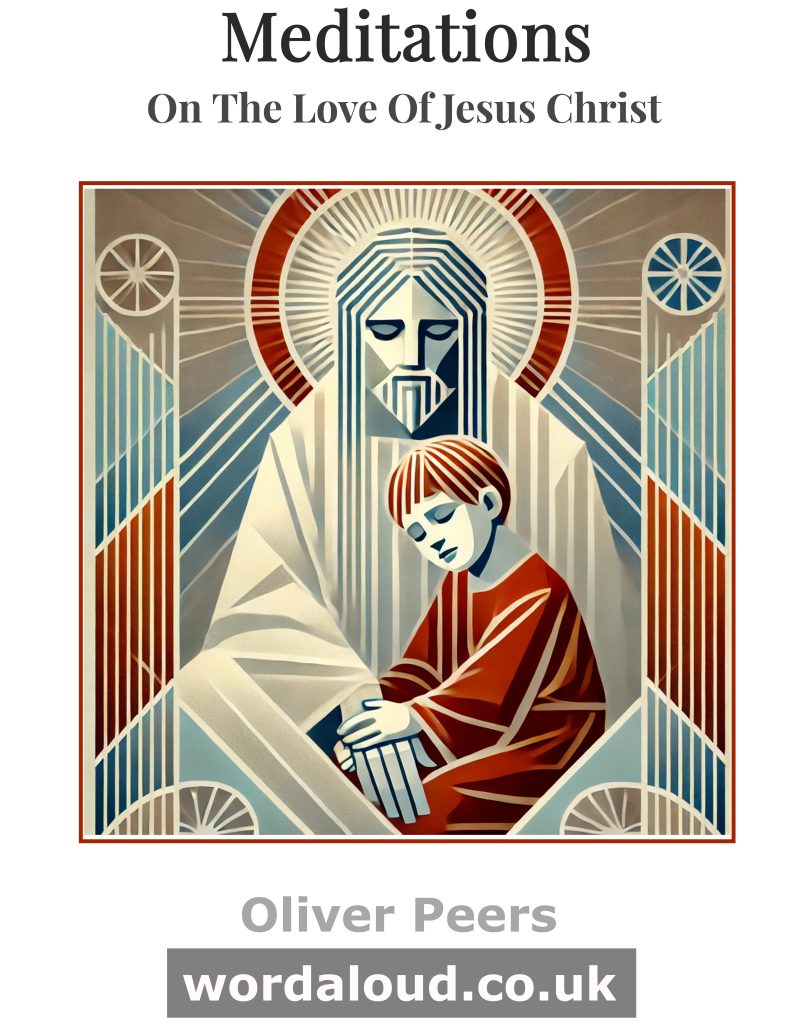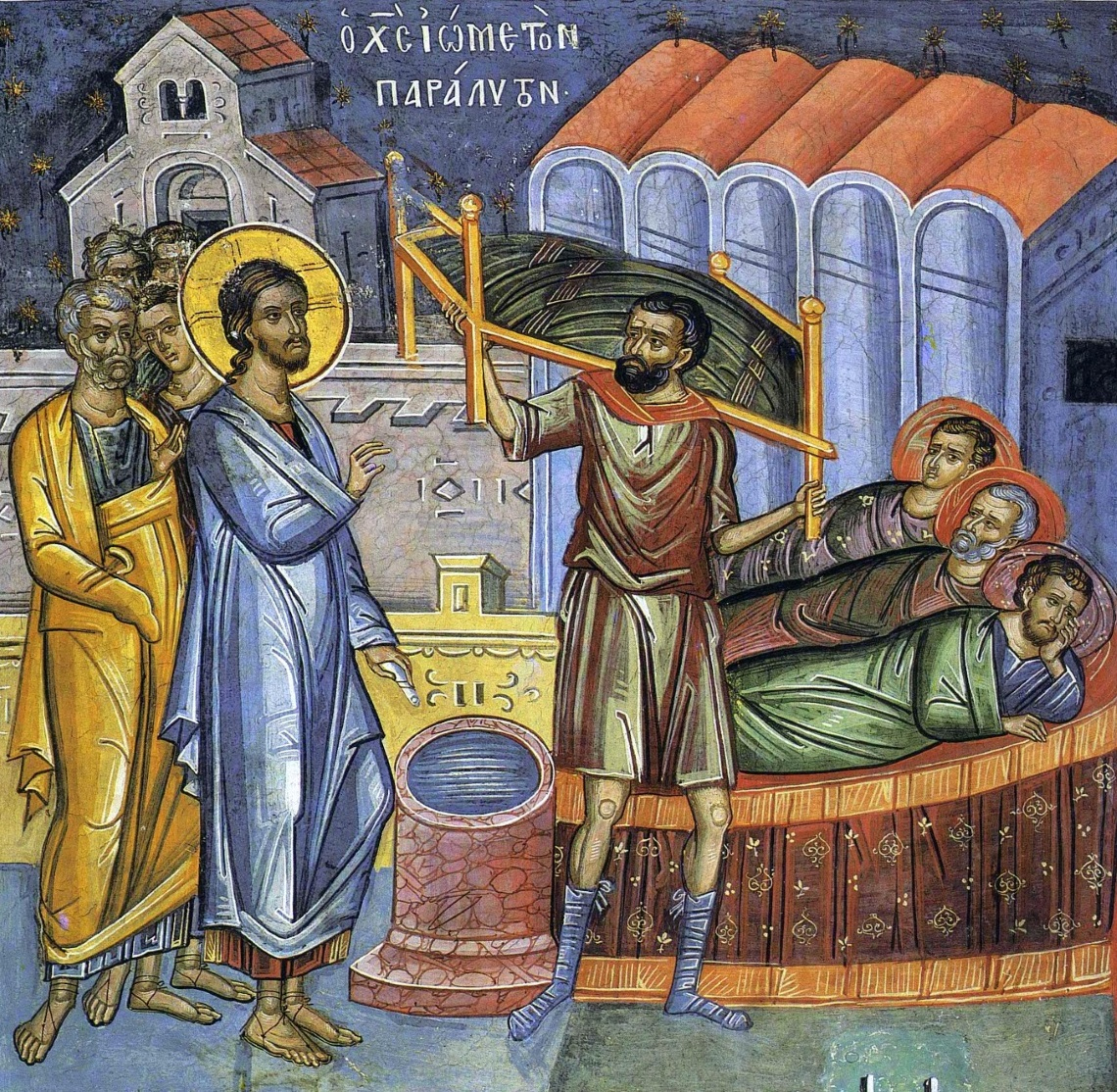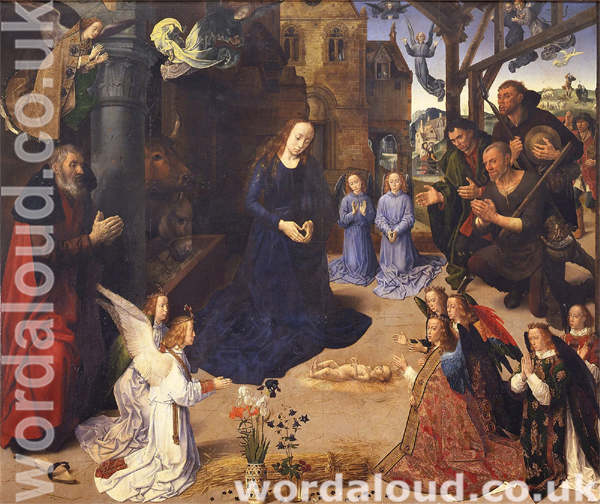Christian Art | Life Of Jesus In The Gospels | King James Audio Bible KJV
The Gospel Of Saint John 14: 1-7 | King James Audio Bible
YouTube: Connection With The Life Of Jesus In The Gospels | King James Audio Bible
The Gospels are not just a collection of stories or teachings, but a window into the life of Jesus. By reading and reflecting on the Gospels, we gain a deeper understanding of who Jesus was and what he came to do.
As we read the Gospels, we see that Jesus was a man of great compassion and love. Jesus showed mercy to the outcasts and the marginalized, and he offered healing and hope to those who were in need. He also taught with authority, challenging the religious leaders of his day and offering a new way of living based on love and service.
But the Gospels are not just a history lesson. They are also an invitation for us to enter into a relationship with Jesus. By reading and meditating on the Gospels, we can come to know Jesus more personally and deeply. We can learn from his example and seek to follow in his footsteps.
So we may be encouraged to read the Gospels, perhaps starting with the Gospel of Mark or the Gospel of John, as we read paying attention to how Jesus interacted with others and how he responded to different situations. We may ask ourselves what you can learn from his words and actions, and how we can apply them to our own lives. And as we read, we can allow ourselves to be drawn into a closer relationship with Jesus. There truly is an historical Jesus. May the Gospels be a source of guidance, inspiration, and transformation for us all.

How Much In The Gospels Is Historical, And How Much Is Myth, Legend, Trope, Figurative Thinking?
It is difficult to say with certainty how much of the Gospels is historical in the modern sense of the word and how much is myth, legend, trope, or figurative thinking. The Gospels were written some years after the events they describe, and they were written from the perspective of the early Christian community. This means that the Gospels may contain a mix of historical facts and interpretation, as well as elements of myth, legend, and figurative thinking.
That being said, scholars believe that the Gospels contain a good deal of historical information. For example, the Gospels describe specific places and events, such as the places where Jesus preached and the events of his trial and Crucifixion. These details suggest that the writers of the Gospels had access to historical information and intended to provide an accurate account of what happened.
On the other hand, the Gospels also contain elements that are not seen by all as historical, howsoever this goes to the root of the faith, such as the miracles performed by Jesus and the accounts of his resurrection. Some see these as legends or myths that were added to the Gospels to help convey the message of the early Christian community.
The question of how much of the Gospels is historical and how much is myth, legend, or figurative thinking is complex. What is important is that we approach the Gospels with an open mind and a willingness to engage with the stories and teachings they contain. We are in the Gospels in conversation with God – and with the many people who have had such faith and conversations – as with the historical Jesus.

Why Do The Gospels Say Were People Afraid Of Jesus?
There are several reasons why people may have been afraid of Jesus, according to the Gospels. One reason is that Jesus was a powerful and charismatic figure who challenged the religious and political authorities of his time. He spoke out against corruption and injustice, and he called on people to repent and turn to God. This type of behaviour was seen as threatening by those in positions of power, and they may have been afraid of losing their influence or authority.
Another reason is that Jesus performed many miracles, such as healing the sick and casting out demons. These miracles were seen as evidence of his divine power, and they may have made people afraid of him. Some people may have been afraid of being healed or possessed by Jesus, while others may have been afraid of what would happen if they did not believe in him.
Finally, some people may have been afraid of Jesus because of the prophecies and expectations of the coming of a messiah. The Jews of Jesus’ time were looking for a saviour who would deliver them from oppression and establish a kingdom of God on earth. When Jesus arrived on the scene, he may have been seen as a threat to the status quo, and some people may have been afraid of what he might do.
Might The Fear Be Related To The Fear Of God – The Injunction To Fear God?
Yes, it is possible that the fear of Jesus mentioned in the Gospels may be related to the fear of God. In the Old Testament, the fear of God is often used to describe a deep reverence and awe for God, as well as a sense of humility and obedience in the face of his greatness. This fear of God is seen as a positive and necessary quality for a faithful believer, and it is often linked to the idea of fearing God’s punishment or judgement.
In the New Testament, the fear of God is also mentioned, but it is often portrayed in a more positive light. For example, in the Gospel of Luke, Jesus tells his followers not to be afraid of those who can only kill the body, but to fear God, who can destroy both body and soul (Luke 12:4-5). This suggests that the fear of God is not just about punishment, but about a deep respect for God’s power and authority.
Given this understanding of the fear of God, it is possible that the fear of Jesus mentioned in the Gospels may be related to the fear of God. Some people may have been afraid of Jesus because they saw him as a powerful and divine figure, and they may have feared his authority and judgement. At the same time, other people may have feared Jesus because they did not understand or believe in his message, and they may have been afraid of what he might do or say. Ultimately, the fear of Jesus mentioned in the Gospels may have been a complex and varied response to his ministry and teachings.

Was Jesus Radical – Even Dangerous? Is There A Radical Christianity?
The love of Jesus can be unsettling and even dangerous because it challenges us to let go of our own selfish desires and to put the needs of others before our own. It calls us to step out of our comfort zones and to take risks in order to serve others and bring about justice and change in the world. This kind of love can be dangerous because it goes against the values of a society that often prioritizes wealth, power, and success over compassion and empathy.
Following the example of Jesus, we are called to love others without reservation or judgement. This means loving those who are different from us, and those who may be considered our enemies. It means loving the poor, the marginalized, and the vulnerable, and standing up for their rights and dignity. It means loving those who are sick, injured, or dying, and offering them comfort and care.
The love of Jesus can be unsettling and dangerous because it goes against our natural instincts and challenges us to be selfless and courageous. It calls us to put the needs of others before our own and to seek justice and righteousness in the world. But it also brings great joy and fulfilment, as we experience the transformative power of God’s love and become agents of change in the world.
As a radical, Jesus challenged the religious and social norms of his time, and he taught his followers to love and serve others in radical ways. He showed us that true radicalism comes not from violence or hatred, but from love and compassion.
As we follow Jesus, we are called to be radical in our own lives. We are called to challenge the things that are wrong in our world, and to stand up for justice and equality. We are called to love and serve others, even when it is difficult or unpopular. And we are called to trust in the power of God to work through us and to bring about transformation in the world.
May we have the courage and the wisdom to be radical followers of Jesus, and to bring his love and mercy to all those we meet. Amen.

Is Mark’s Gospel The Most Historical Jesus?
The Gospels were written some years after Jesus’ life and death. Each Gospel was written from a specific perspective and for a particular audience, and they all contain some historical details as well as theological interpretations and teachings.
Mark’s Gospel is considered to be the earliest of the four Gospels, and it is known for its vivid and fast-paced narrative. Mark’s Gospel focuses on the actions and teachings of Jesus, and it emphasizes his power and authority over demons, diseases, and nature. While it contains historical details, it also includes stories and teachings that may have been added or interpreted by the authors.
We approach the Gospels with an awareness of their historical and theological contexts, and recognize that they are not necessarily objective or unbiased accounts of Jesus’ life. They are the product of the early Christian community’s experiences and beliefs, and they provide valuable insights into the teachings and significance of Jesus for his followers.

Jesus Was And Is God? Fully Human And Fully Divine?
The belief that Jesus is fully human and fully God is known as the doctrine of the hypostatic union. It is based on the idea that Jesus, as the son of God, is both fully divine and fully human. This means that he has both a human nature and a divine nature, and that these two natures exist in him without being blended or mixed together.
The doctrine of the hypostatic union, which states that Jesus is both fully human and fully God, is an important part of Christian theology. It helps to explain how Jesus was able to live a sinless life, suffer and die on the cross for the sins of humanity, and be resurrected from the dead. This belief is essential for understanding the mystery of the incarnation and the salvation that Jesus brings. While it may be difficult to understand and accept, it is a fundamental part of the Christian faith. For many Christians, the belief that Jesus is God is not radical, but rather a foundational belief that shapes their understanding of who Jesus is and what he came to accomplish.
I Have Heard That Jesus’ Teachings Draw On The Rabbinical Tradition And Also Upon The Philosophy Of Plato
It is true that Jesus’ teachings draw on elements of both the rabbinical tradition and the philosophy of Plato. The rabbinical tradition refers to the teachings and interpretations of the Hebrew Scriptures (also known as the Old Testament) by the Jewish rabbis, or religious teachers, of the time. This tradition was very influential in Jesus’ time, and he would have been familiar with the various interpretations and teachings of the Jewish religious leaders.
The philosophy of Plato, on the other hand, was a different type of influence on Jesus’ teachings. Plato was a Greek philosopher who lived many centuries before Jesus. His philosophy was based on the idea that true knowledge and reality are not found in the physical world, but in a higher realm of eternal, unchanging ideas. Plato’s ideas about the nature of reality and knowledge may have influenced some of Jesus’ teachings about the kingdom of God and the spiritual nature of truth.
Overall, it is clear that Jesus’ teachings were influenced by a variety of sources, including the rabbinical tradition and the philosophy of Plato. However, it is important to note that Jesus’ teachings were not simply a repetition of these traditions, but a unique synthesis of various ideas and perspectives. He was a master teacher who used his own words and insights to convey his message of love, forgiveness, and redemption.

![]()
Why Was Jesus Against Temple Judaism?
It is not entirely accurate to say that Jesus was against Temple Judaism, as the Gospels do not present a clear-cut case of Jesus being against the Temple or its practices. However, it is true that Jesus was critical of some aspects of the religious authorities and their practices, and he challenged some of the traditions and customs of the time.
One reason why Jesus may have been critical of Temple Judaism is that he saw it as being too focused on ritual and legalism, rather than on the true spirit of worship and obedience to God. In the Gospels, Jesus is often portrayed as criticizing the religious leaders for their emphasis on following rules and regulations, rather than on loving God and others. For example, in the Gospel of Matthew, Jesus says, “Woe to you, teachers of the law and Pharisees, you hypocrites! You give a tenth of your spices—mint, dill and cumin. But you have neglected the more important matters of the law—justice, mercy and faithfulness” (Matthew 23:23).
Another reason why Jesus may have been critical of Temple Judaism is that he saw it as being too focused on the external forms of worship, rather than on the internal transformation of the heart. In the Gospels, Jesus often emphasizes the importance of inner righteousness and devotion to God, rather than outward observance of the law. For example, in the Gospel of Matthew, Jesus says, “It is not what goes into the mouth that defiles a person, but what comes out of the mouth; this defiles a person” (Matthew 15:11).
Overall, it is clear that Jesus was critical of some aspects of Temple Judaism, but it is important to remember that he was also a devout Jew himself, and he did not reject the core principles and beliefs of Judaism. Rather, he sought to reform and renew the faith, and to call his fellow Jews (and all people) to a deeper and more meaningful relationship with God.

Did Jesus Have Brothers And Sisters?
According to the Gospels, Jesus had brothers and sisters. In Mark 6:3, it is said that Jesus was “the carpenter, the son of Mary and brother of James and Joses and Judas and Simon” (Mark 6:3). In the same chapter, it is also said that Jesus’ mother and brothers came to see him while he was teaching, and that they were unable to get through the crowd to speak with him (Mark 6:3-4).
Some people have interpreted this to mean that Jesus had several siblings, while others have suggested that the term “brothers” and “sisters” may be used more broadly in the Gospels to refer to cousins or other relatives.
In Catholic teaching, the existence of Jesus’ siblings is seen as an important aspect of the Incarnation, the belief that Jesus was both fully human and fully divine. By having siblings, Jesus was able to experience all the joys and challenges of life in a human family, and he was able to understand and relate to the needs and struggles of ordinary people.
At the same time, Catholic teaching also affirms the Virgin Birth of Jesus, the belief that Mary, his mother, was a virgin when she conceived and gave birth to Jesus. This means that Jesus’ brothers were not his biological siblings. In this way, the Catholic Church’s view on the question of Jesus’ siblings is a harmonization of the different accounts and traditions found in the Gospels.
What Did Jesus Mean When He Said That He Was Come To Create Discord – To Turn Brother Against Brother, For Example?
When Jesus said that he had come to create discord, he was referring to the fact that his teachings and actions would inevitably cause conflict and disagreement among the people of his time. This is because Jesus’ message was radical and challenging, and it went against the expectations and beliefs of many people.
For example, in the Gospel of Luke, Jesus says, “Do you think that I have come to bring peace to the earth? No, I tell you, but rather division! From now on five in one household will be divided, three against two and two against three; they will be divided: father against son and son against father, mother against daughter and daughter against mother, mother-in-law against her daughter-in-law and daughter-in-law against mother-in-law” (Luke 12:51-53).
In saying this, Jesus was not advocating for division or conflict, but rather warning his followers that his message would be divisive and that they would face opposition and rejection from some people. This is because Jesus’ message was one of radical love and inclusion, and it challenged the religious and social norms of his time. By speaking out against injustice and oppression, and by calling on people to repent and turn to God, Jesus was bound to create conflict and division among those who were resistant to his message.
At the same time, however, Jesus’ message also had the potential to bring people together and create unity among those who were willing to listen and respond to his call. By offering forgiveness, healing, and salvation to all who believe in him, Jesus was able to bring people from different backgrounds and beliefs together in a community of love and fellowship. So while Jesus’ message did create discord and division, it also had the power to bring people together in a new and transformative way.

Is It True To Say That Jesus Was An Exorcist?
Yes, it is true to say that Jesus was an exorcist. In the Gospels, Jesus is often portrayed as casting out demons, or evil spirits, from people who were possessed or oppressed by them. For example, in the Gospel of Mark, it is said that “Jesus went throughout Galilee, teaching in their synagogues and proclaiming the good news of the kingdom and curing every disease and every sickness among the people. News about him spread all over Syria, and people brought to him all who were ill with various diseases, those suffering severe pain, the demon-possessed, those having seizures, and the paralyzed, and he healed them” (Mark 1:39-40).
This passage and others like it show that Jesus was known for his ability to exorcise demons, and that many people came to him seeking deliverance from evil spirits. In some cases, Jesus would simply command the demon to leave the person, and it would do so. In other cases, he would engage in a more prolonged and intense confrontation with the demon, using his authority and power to overcome it.
It is important to note, however, that the Gospels do not present Jesus’ exorcisms as simply a matter of removing a demon from a person. Rather, they are seen as part of Jesus’ ministry of healing and restoration, in which he brings freedom and wholeness to people who are oppressed and broken by sin and suffering. By casting out demons, Jesus is not only ridding people of evil spirits, but also setting them free from the power of sin and death, and bringing them into a new and abundant life in God.
How Is John’s Gospel Distinct In What It Shows Me Of Jesus?
John’s Gospel is distinct from the other Gospels in several ways, and it offers a unique perspective on the life and ministry of Jesus. Here are some ways in which John’s Gospel is distinct from the other Gospels:
- John’s Gospel emphasizes the divinity of Jesus more than the other Gospels. In John’s Gospel, Jesus is consistently portrayed as the Son of God, and his miracles and teachings are often presented as signs of his divine nature. For example, in John 3:16, Jesus says, “For God so loved the world that he gave his one and only Son, that whoever believes in him shall not perish but have eternal life.”
- John’s Gospel focuses more on the inner life and motivations of Jesus and the people around him. While the other Gospels often present a more narrative and factual account of Jesus’ life, John’s Gospel is more interested in the thoughts and feelings of Jesus and those around him. For example, in John 11:35, it is said that “Jesus wept” when he saw the sorrow of his friend, Lazarus.
- John’s Gospel includes a number of unique stories and teachings that are not found in the other Gospels. For example, John’s Gospel includes the famous story of the woman caught in adultery (John 8:1-11), as well as the conversation between Jesus and Nicodemus about being born again (John 3:1-21). These stories and teachings provide a deeper and more personal insight into the life and ministry of Jesus.
- John’s Gospel emphasizes the themes of light and darkness more than the other Gospels. In John’s Gospel, Jesus is often referred to as the “light of the world” (John 8:12), and he uses this imagery to illustrate his teachings and miracles. For example, in John 9:5, Jesus says, “While I am in the world, I am the light of the world.” This emphasis on light and darkness is a unique feature of John’s Gospel, and it provides an important insight into its message and purpose.
- John’s Gospel includes a number of extended conversations and dialogues between Jesus and various characters. These conversations provide an in-depth look at the beliefs and doubts of the people around Jesus, and they offer a rich and diverse perspective on his teachings. For example, in John 3, Jesus has a conversation with Nicodemus, a Pharisee and teacher of the law, in which he explains the nature of spiritual rebirth. In John 6, Jesus has a conversation with the crowds who are following him, in which he teaches them about the Bread of Life. These conversations and dialogues are a unique feature of John’s Gospel, and they provide a deeper and more personal insight into the teachings of Jesus.
- John’s Gospel includes a number of references to the signs and wonders that Jesus performed, which are not found in the other Gospels. For example, in John 2:11, it is said that “Jesus did this, the first of his signs, in Cana of Galilee, and revealed his glory; and his disciples believed in him.” These references to the signs and wonders that Jesus performed provide an important aspect of his ministry and demonstrate the power and authority that he had. By reading John’s Gospel, we gain a deeper understanding of the miracles and wonders that Jesus performed, and how they served as signs of his divine nature and mission.

![]()








